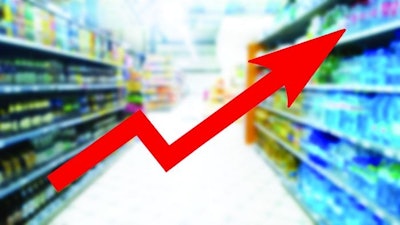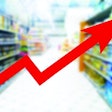
Let’s start with good news: Sales of dog and cat food in the U.S. are continuing their heady pace of double-digit growth each year — for example, 2023 sales will end up nearly 14%, totaling US$51 billion over the 2022 figure of roughly US$44.8 billion, per data from Packaged Facts. That 2022 total represented 12% growth over 2021.
Yet in its latest report, “Pet Food in the U.S., 17th Edition,” Packaged Facts cautions that for the first time in recent history, the increase in dog and cat food sales growth has been driven almost entirely by higher prices, aka inflation, “rather than by this market’s historical growth driver, premiumization.”
David Sprinkle, Packaged Facts’ director of pet market research, previously mentioned inflation’s role in discussing 2022 sales growth, but it seems to be having an even greater impact now. The new report includes data from a September/October 2023 survey of U.S. pet owners showing one-third had changed pet foods in the previous 12 months; of those, 32% of dog owners and 28% of cat owners said they traded down to lower-priced products.
Pet food inflation declining, but prices still higher
While U.S. pet food inflation on a year-over-year basis has been declining since late spring 2023 — for October, it stood at 6.5% YOY, down from September’s 7.6% and less than half the 15%+ high it hit in late 2022/early 2023 — prices are still almost 23% higher than in October 2019, pre-pandemic. (The inflation data comes from the U.S. Bureau of Labor Statistics via John Gibbons of PetBusinessProfessor.com, who helpfully compiles and analyzes the pet industry figures each month.)
Considering that human food prices (namely, groceries) are up 25.77% from October 2019, consumers are definitely feeling the strain. “With prices of basic human food staples such as eggs and butter doubling and tripling, pet shoppers have been cutting back even in the market’s least discretionary category of pet food,” remarked Sprinkle’s colleague David Lummis, lead pet market analyst for Packaged Facts, in a May 2023 article in “Pet Product News.”
The recent survey data about pet owners trading down to lower-priced pet foods mirrors feedback from February 2023, when another Packaged Facts survey showed 42% of U.S. dog owners and 44% of cat owners naming the high cost of pet food as one of the most significant challenges to owning a pet. Of course, that’s on top of other high costs of pet care, including veterinary and medications, as presented by Sprinkle during a Petfood Forum 2023 session. In addition, Packaged Facts data from January to August 2022 indicated pet food spending increased for 28% of U.S. pet owners.
Even the ‘well-off feel the bite,’ yet pet food sales expected to rise
It's tempting to assume that many, or most, of the pet owners experiencing significant pain from higher pet food prices are in lower-income brackets, but that may not necessarily be the case. In his May article, Lummis quoted a Wall Street Journal article from February 2023 in which an expert commented: “The U.S. could still skirt a recession, but it is already in a ‘richcession.’ That’s when, amid economic uncertainty, the well-off feel more of the bite.”
I can remember in the before times, before the pandemic and this high inflationary period, when I and others in the pet food industry speculated whether there was a ceiling to premiumization, a limit to how much even affluent pet owners would spend on their pets’ food. Recent data indicates we may have reached it.
Fortunately, the market is dealing from a foundation of strength. “Underpinnings like ‘pets as family’ and health and wellness will keep the pet industry on solid ground,” Lummis predicted. To that end, Packaged Facts rather bullishly projects U.S. dog and cat food sales to increase at a compound annual growth rate of nearly 10% through 2027, meaning they would reach US$73 billion that year.


















